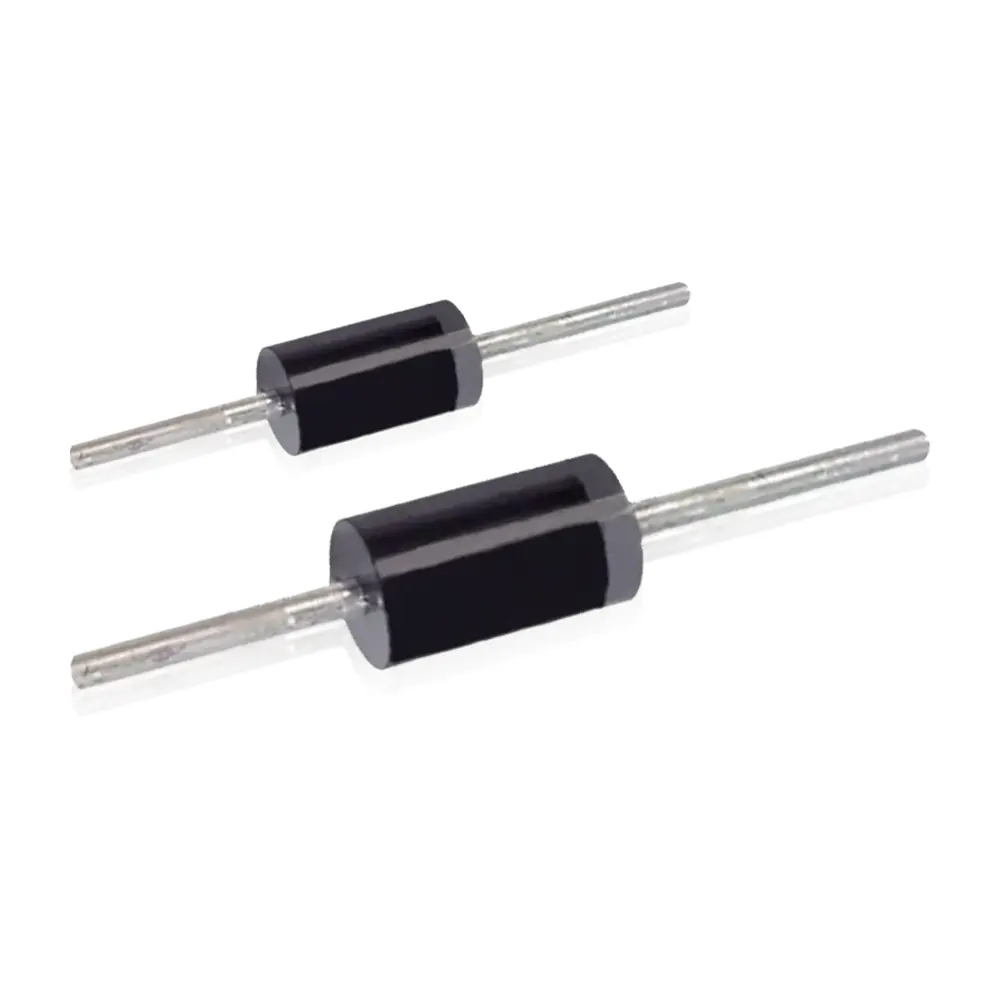
SB2100S_R2_10001
SB2100S_R2_10001 are semiconductor devices that are used in electronic circuits to rectify or convert alternating current (AC) into direct current (DC).
Inquire Now
Description
SB2100S_R2_10001 are semiconductor devices commonly used in electronic circuits. Used to rectify or convert alternating current (AC) to direct current (DC). Schottky diodes and rectifiers are name after German physicist Walter Schottky. He invented the Schottky barrier diode in 1938.
Rectifiers are electronic devices used to convert AC to DC. Schottky rectifiers are commonly used in power supply circuits due to their low forward voltage drop. This results in less power loss and higher efficiency. They also have faster switching speeds than p-n junction rectifiers. This makes them suitable for high frequency applications.
PEC is a process used in the manufacturing of Schottky diodes and rectifiers. PEC is a type of chemical vapor deposition (CVD). It uses plasma to enhance the deposition process. Plasma is create by applying a radio frequency (RF) electric field to a gas. This causes the gas to ionize and become a plasma. Plasma enhances the chemical reactions that occur during deposition. This results in a higher quality and more uniform film.
To sum up, Schottky diodes and rectifiers are semiconductor devices used in electronic circuits. Used to rectify or convert alternating current to direct current. In contrast to p-n junction diodes, they use a metal-semiconductor junction to create a potential barrier. Allows high speed switching and lower forward voltage drop. PEC is a process used to manufacture Schottky diodes and rectifiers. Chemical vapor deposition processes using plasma can be enhance.
SB2100S_R2_10001 Feature
- High-quality films: PEC enhances the chemical reactions that occur during deposition. resulting in higher quality films. The plasma helps break down and ionize the precursor gas. This allows better control over the deposition process. And produce thin films with fewer defects and impurities.
- More uniform films: PEC also helps to create more uniform films. The plasma enhances the transport of reactants to the substrate surface. resulting in a more uniform deposition on the substrate. This is especially important for Schottky diodes and rectifiers. They require precise and uniform films to work properly.
- Better adhesion: PEC can also improve the adhesion of the films to the substrate. Plasma helps remove any surface contaminants or oxides on the substrate. This results in a better bond between the film and the substrate.
- Higher deposition rates: compared to other CVD processes. PEC also enables higher deposition rates. Plasmas can enhance reaction kinetics. Allows for faster deposition while maintaining high quality films.、
FAQ
Q:What is a Schottky diode and how is it different from a regular diode?
A:A Schottky diode is a type of diode that uses a metal-semiconductor junction instead of a p-n junction. Compared to a p-n junction diode. This creates a potential barrier that allows high-speed switching and lower forward voltage drop.
Q:What is PEC and how is it used in manufacturing Schottky diodes and rectifiers?
A:PEC (Plasma-Enhanced Chemical Vapor Deposition) is a chemical vapor deposition. Using Plasma Enhanced Deposition Process. The plasma is create by applying an RF electric field to a gas, which causes the gas to ionize and become a plasma. PEC is use in the manufacture of Schottky diodes and rectifiers. To create high-quality, uniform films with excellent adhesion and high deposition rates.
Q:What are the advantages of using Schottky diodes and rectifiers made using PEC?
A:compared to other CVD processes. There are several advantages to using Schottky diodes and rectifiers fabricated with PEC. These include higher quality films, more uniform films. as well as better adhesion and higher deposition rates. These characteristics make them ideal for high frequency applications. Examples include power supplies, voltage regulators, and RF circuits.
Q:What are some common applications for Schottky diodes and rectifiers made using SB2100S_R2_10001?
A:Schottky diodes and rectifiers fabricated using SB2100S_R2_10001 are commonly used in power supply circuits. due to its low forward voltage drop.thereby reducing power loss and increasing efficiency. They are also used in high frequency applications. Examples are voltage regulators, RF circuits. And other electronic circuits that require fast switching speeds.
Q:Are there any limitations to using Schottky diodes and rectifiers made using PEC?
A:Although there are several advantages to using Schottky diodes and rectifiers fabricated by PEC. But they may not be suitable for all applications. For example, they may not be as robust as p-n junction diodes. And they may not be suitable for high voltage applications. When choosing a diode or rectifier for a particular circuit. You need to carefully consider application requirements.


























































































